NEGenWeb Project
Church/Catholic
Franciscans
Chapter XVII
Church of St. Stanislaus, Bishop and Martyr, Duncan
ST. STANISLAUS CHURCH,
DUNCAN,
NEBRASKA
Messrs. Valentine Jarecki, John and Joseph Rosno, Anthony Nickolajczyk, Lawrence Kujawa, Martin Borowiak, John Krzycki, George Borowiak, Felix Krzycki, Thomas Podraza, Stanislaus Skorupa and many others settled in and near Columbus since 1868. Those coming from Prussia spoke also German, those from Galicia in Austria did not. Fr. Ryan conversant with neither German nor Polish, called in occasionally Fr. F. Uhing from St. Charles and Fr. X. Shulak, S. J., from Chicago, to administer to these immigrant parishioners. In the spring of 1877, Rev. Sebastian Cebulla, O. F. M., a Pole, arrived to look especially after his countrymen. Proselytizers were already trying to pervert the Poles by even offering them the Protestant Bible in Polish. At first the Poles attended Father Ryan's church and since 1877, St. Bonaventure's church, where sermons and instructions were given them in their mother tongue. As more and more settlers arrived and took farms at some distance from Columbus, the desire for a church of their own near Duncan arose and was fostered by Fr. Cyril Augustinsky, who in a letter of March 4, 1882, writes that Fr. Dominic favored, yes, originated the idea. If in another letter, he complains of being hindered from doing anything for his countrymen, the reason probably was his undertaking much more work than was good for his frail health. Fr. Cyril also begs the Rt. Rev. Bishop to obtain from the railroad company a site for a church as a donation. This would induce the Poles to settle and buy up the railroad land still in the market.
The reply of the Bishop is indicated by a marginal note: Forty acres at $10.00 per acre S. E. of S. E.
THE ERECTION OF ST. STANISLAUS' CHURCH, 1882
Having obtained permission to build a church, Mr. M. Wlezyk donated the land and a committee solicited subscriptions, Mr. J. Kyle subscribing $100.00. When getting the lumber, the lumberman would not accept the assurance that a collection would be taken up to defray the expense, but Messrs. W. Jarecki, L. Kujawa, and W. Lassek first had to sign a note for the amount. But their countrymen came across with their share.
The men residing on the "Island" in the Platte river, made an attempt to erect the church there. The difficulty of getting the material across the river, however, made them desist. Mr. S. Stachura did the work of construction. He is said to have carried each piece of timber on his shoulders to the building site.
FATHER ANASTASE CZECH,
O. F. M., TAKES CHARGE,
FALL 1882-1896
Before completion of the frame church, Fr. Cyril was replaced by Fr. Anastase. He finished the crude structure consisting of four walls and the roof, added a sacristy and an office and bedroom for the priest and dedicated the church (26x40 feet) on or about December 24, 1882. The first Mass was said in it on Christmas day, we are told. Prior to this, Mass had sometimes been celebrated at the Jarecki home, or in the district school on the Island.
The first baptism recorded at Duncan (the second one in church) is that of Stephen Koziol, born December 13, 1882. Possibly that of John Knopping may have been the first one. He was baptized December 2, by Fr. Anastase. Mr. Joseph Cich and Miss Louise Koziol were the first couple married there. Andrew Szewezyk, aged thirty-one years, was the first, whose remains were laid to rest from the church of St. Stanislaus.
RELIGIOUS INSTRUCTIONS.
As Fr. Anastase had also the mission of St. Anthony's (German and Polish) and the Poles at Columbus to look after, and since as yet there was no parochial school at Duncan, the pastor provided for religious instructions as best he might, as the following quotation shows: "On both sides of Duncan, where the majority of the Poles reside, religious instructions are imparted every Saturday on which there is divine service, by capable laymen. The priest then, on the different Saturdays visits alternately, now this, now the other side. At present instructions are imparted at the public school house near Martin Borowiak's, Polk County, by Mr. John Krzycki (formerly a teacher in Prussia) and on the north side of Duncan in the living room of George Borowiak by Mrs. Stanislaus Borowiak nee Mrozynski. And on those Sundays, on which Duncan has divine service (every second Sunday), the priest himself teaches Sunday school for one-half hour after High Mass."
During the first years Fr. Anastase boarded with Lawrence Byrnes, the section boss. As a remuneration for the labors of the priest the church committee, consisting of M. Borowiak,
413
![]()
S. Skorupa, F. Wozniak, J. Krzycky, M. Ryba, O. Borowiak and Thomas Podraza, pledged $200 a year besides the 'termin" or collection of produce. The latter was discontinued January 1, 1889, and a sum of $300 was paid as salary. Since July, 1883, service was held three times a month, as directed by Very Rev. Provincial.
ENLARGING THE CHURCH--
STATIONS--BELLS
The Stations of the Cross had been canonically erected Nov. 4th, 1883. In winter, 1885-1886, the church was enlarged to double its size and a steeple was added. P. Anastase also purchased three bells. One had been blessed already at St. Louis; the other two were blessed by Fr. Urban Stanowski, O. F. M., March 7, 1886. He also dedicated the addition to the church. Fr. Urban preached a mission in September, 1886.
THE PAROCHIAL SCHOOL
For a time John Mrozynsky taught boys and girls to read and write Polish. In 1883 P. Anastase sought to establish a parochial school. In 1887 it was opened by Mr. Peter Kozlowski as teacher with a salary of $200 per year and of $50 as organist.
On January 10, 1888, St. Stanislaus (Bishop and Martyr) Church was incorporated. In the fall of 1887, the parish had purchased 40 acres of land from Howard Kennedy, Omaha, for $389.70. Part of it was fenced in for a cemetery.
To more easily preserve the faith of the Polish people, Father Anastase prudently, with Episcopal approval, retained most Polish customs. Among them we mention the blessing of wafers on Christmas, which were mutually

St. Stanislaus Church and School, Duncan
shared at home by father, mother, and children as a pledge of preserving the peace; the Kolenda at the season of the Three Kings, i.e., the blessing of the houses by the pastor and a luncheon served for him with a donation given the Reverend guest. The greatest punishment for delinquent parishioners was to pass them by on this occasion. The Poles also sang the Vespers and the Rosary in Polish as they did the Lamentations in Lent.
ARRIVAL OF THE SISTERS
Ven. Sister M. Hilaria, superior and house Sister, Sr. M. Theodora and Sr. M. Dorothea arrived on October 28, 1889. Sr. Dorothea taught the primary grades; Sr. Theodora served as organist. As the furniture for the Sisters did not arrive in time, a three-legged table and a long bench were pressed into service in the dining room. The room was so limited that the Sisters had to slip out sideways through the door. One sister held up the table with her knee till another, having eaten, replaced her. The garret dormitory was so low that the Sisters bumped their heads when rising. Besides, it was very cold in winter and very hot in summer. Having only one class room, the Sisters took their turn teaching in the open and in the room, provided the weather permitted. The age of the pupils ranged from that of mere children to that of young men wearing a moustache. One of the latter later on told that he would rather have taken an axe to split wood than learn the ABC. But now he was grateful to the Sisters that they taught him to read, write and figure sufficiently, to get along in the world.
414
![]()
As the Sisters had no milk, Mrs. Kyle gave them a cow. This was turned over to a family, which in turn supplied the Sisters with milk. Despite the poverty of the early years, the Sisters were happy; for Fr. Anastase was a kind father, who always brought something along for his "children". He also gave them conferences and provided carefully for their spiritual needs. In the cold season he insisted on them making their preparation for Holy Communion in a warm room instead of the cold church.
REMINISCENCES OF SR. M. ROSALINDA
We are sorry that space forbids us to dwell at length on the experiences of Sr. M. Rosalinda. The Sisters had many children boarding with them in winter. When Sister wanted to go shopping at Columbus, she waved her white handkerchief or her lantern, stopped and boarded the train. Once, when carrying a load of parcels, she attempted to board the train, she stumbled and almost fell, the conductor remarked: "Sister, the next time you take the freight train." Another time Sr. Rosalinda borrowed a team and drove to a livery barn. When done shopping, she asked the clerk to carry the parcels to the livery stable. When the query came--"Why?" she blushingly owned up that she had never driven a team before and was ignorant how to turn around.
ORGANIZING PARISHES AT PILZNO AND CRACOW
In 1889, fifty families of the Pilzno vicinity formed St. Mary's parish which since 1887 belonged to the Lincoln diocese. Father Moneta erected a parsonage hoping that the "island" farmers would join his parish. They refused to do so. Difficulties arose regarding the parish (and diocesan) limits. But let Fr. Rembert tell the story. "Duncan at that time would have been a very insignificant parish had it not been for the "island" and the parishioners living on the same. As long as the diocese comprised the whole of Nebraska, there was no difficulty about the "island". But when the diocese of Lincoln was cut off from the Omaha diocese, the island became a bone of contention. The island is separated or rather washed on the north side by the main arm of the Platte river and on the south side by the small insignificant South Channel. Quite a number of farmers living south of the island became subjects of the diocese of Lincoln and soon built a frame church in Pilzno and in due time got a priest in the person of Father Moneta. The whole place was called "Pilzno."
"Fr. Anastase considered the island as part of his parish. Most of the farmers preferred to stay with Duncan, if for no other reason than that it had a Catholic school. As matters stood, it was unpleasant for both pastors and people. The pastor at Pilzno, however, maintained that it was unjust to the people of the island, especially since the island politically belonged to the county (Polk County), in which the Church stood. Besides, when the bridge to Duncan was impassible, the people had to go to church by way of Columbus, and this made church-going an arduous task. But here the personality of Fr. Anastase played the decisive factor and the people remained with Fr. Anastase. So the case was referred to the Papal Delegate Satolli, who decided in favor of Duncan. 'The south shore of the Platte river was the boundary of the Lincoln diocese,--so said the instrument of erection and therefore, all islands in the river still belonged to Omaha."
DEATH OF FR. ANASTASE, O. F. M.
For a number of years Fr. Anastase had been pastor-in-chief of the Poles at Tarnov (and the Germans at St. Anthony's), of St. Edward, of the Duncan parish and of the Poles at Columbus. Besides he made regular visits, at Easter time and at one or the other time a year, to his Polish countrymen in Colorado, Wyoming and parts of Nebraska. Exhausted by countless and strenuous labors in the care of souls, he sucsumbed (sic) to a complication of diseases at St. Joseph's Hospital, Omaha, on March 13, 1896. The obsequies held at Columbus were among the best attended ever held at Columbus. Poles from several counties flocked to Columbus and despite the inclement weather many had to remain outside the church. The Rt. Rev. Bishop Scannell officiated and in eulogy of the deceased said: "You have lost a father, a friend, in whom you could confide. I often asked his advice and was glad to follow it and in doing so, I never went wrong."
Fr. Anastase (Joseph) was born at Preiskretcham, Silesia, Germany, on October 31, 1855. As a young man he clerked in a store at Alt-Piekar, until he felt the call for the religious priesthood, perhaps through the mediation of the Blessed Virgin, whose gnadenbild (miraculous image) at that place he often visited. He entered the Franciscan order, on August 30, 1873, came to America in 1875 and was ordained on June 5, 1881. Fr. Anastase was first assigned to Dubois, a mission of Radom, in Southern Illinois, then to Columbus, Nebraska. He was a true son of St. Francis who labored strenuously without extinguishing the spirit of prayer. He cherished a special devotion to Je-
415
![]()
sus in the Blessed Sacrament and the Blessed Virgin Mary. In his letters he often requests his relatives in Silesia to carry his greetings to Our Lady of Alt-Piekar.
Fr. Anastase was a very devout priest, a hard worker, solicitous for the temporal and spiritual welfare of his charges and beloved by all. His influence with county and railroad officials was great. Hence his confreres (sic) jocosely styled him "Prince of the Bulgarians." Uncomplainingly he shared the pioneer hardships with his flock. Sometimes sick calls would take him over twenty miles with a team and wagon and over a trail for a road. On receiving the telegram that he was wanted on a sick call at Silver Creek, he would get ready at Columbus and walk over the Union Pacific bridge up the road towards Nance County until he met the farmer coming for him. At times he would ask some wayside farmer to take him part of the way. When going on his missionary trips, often some bread and a piece of sausage was his frugal meal.
A confrere, who came into intimate contact with Fr. Anastase, who was his teacher in theology after he had been ordained and sent to Nebraska in 1894, says of Fr. Anastase: "I was with him every Sunday, and, of course, during the week at Columbus. Looking back at those times and judging the impressions I then got in the light of later experiences, I must say that Fr. Anastase manifested a pastoral prudence and foresight which is not at all ordinary with priests of his same age. They used to call him the "Old Czech", not because there was a younger Czech (P. Ladislaus), but because of his ways and the sagacity of his mind in solving many perplexing situations. Among others, the following facts will show how far he was ahead of his time.
"Frequent, even daily Communion, was introduced by him at Duncan. He had a strong Third Order at a time when no one thought of its importance for our times. In school he introduced the study of religion in the English language for the higher grades, and he made this so plausible, that he had no difficulty in maintaining it. All this was very extraordinary for his time and was commented on by others. Although I was only at the beginning of my priestly life he would often ask me, how I would act in this or that case and although much older than I, he would often act upon my suggestions. This to my consternation, because I thought he was not serious. He did not explain why he acted thus, but it gave me an idea of his humility and at the same time encouraged me."
"Another thing which I noticed was his strict adherence to the time of meditation. Every morning I saw him reading his Latin Avancini and in the afternoon, even on Sundays, he would remind me that it was time for meditation. It was the same with his thanksgiving after Mass, which he invariably performed in the sanctuary."
The academy girls believed he could read their thoughts and tried to think of good things in his presence.
"In fine he was a priest according to the heart of God, a genuine son of St. Francis a congenial and sincere confrere, respected and loved by all who knew him His blessed death was a heavy loss to the province and caused universal regret. His memory will be held in benediction."
History of the S. Heart Province, p. 182, and Biogr. Sketch furnished by Rev. Roger Middendorf, O. F. M.
REV. REMY BERENDT,
O. F. M.,
1896-JUNE, 1898
After Fr. Ladislaus and Fr. Sebastian's temporary pastorates Fr. Remy was appointed rector of St. Stanislaus' parish. In 1898 Fr. Remy enlarged the church by adding the sacristy to serve as a winter chapel and by building a transept. The cost was $1,500. Before its completion, the pastor was transferred.
Fr. Remy (Francis) Berendt was a native of Lessen, where he was born December 3, 1863.
He came with his parents to St. Joseph, Missouri, where Frank worked for a time as fireman on the railroad then as a cigar maker. Feeling a calling for the priesthood, he made his classical studies at Quincy, Illinois, took the habit of St. Francis July 27, 1889, and was ordained priest June 24, 1895. Fr. Remy labored at Radom, Illinois; Columbus, Nebraska; as a missionary, in many states of the union; in Phoenix, Arizona; Quincy and Joliet, Illinois. Broken in health, he was sent to Humphrey, Nebraska, and helped as much as his health permitted. At the end of October he entered St. Mary's Hospital at Columbus, where he passed away suddenly November 5, 1924. His remains rest beside Fr. Anastase's in St. Bonaventure's cemetery.
Fr. Remy gave more than 100 missions and many triduums and retreats. Many times he preached three to five sermons a day and heard confessions till the wee hours of the morning, working, at times, 12 to 16 hours a day. Being very stout, more than once the kneeler broke under him. Once he broke through a buggy and broke his arm; on another occasion, the pulpit tilted, when the speaker waxed eloquent and spilt him among his audience, luckily without injuring any one. Fr. Remy was withal a zealous priest and good religious and a general favorite among his confreres (sic).
416
![]()
|
Four of the Galus Family |
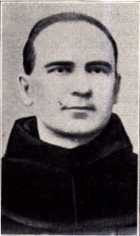
Rev. Anastase Czech, O. F. M. |
|
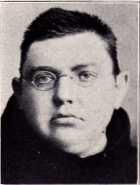
Rev. Remy Berendt, O. F. M. |
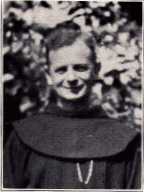
Rev. Flavius Kraus, O. F. M. |
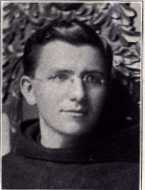
Rev. Raymond Micek, O. F. M. |
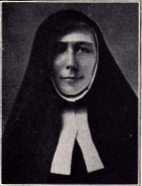
Ven. Sr. Seraphia Krzycki, O. S. F. |
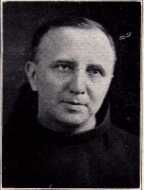
Rev. Cyril Mitera, O. F. M. |
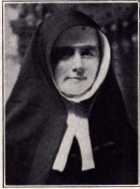
Ven. Sr. Loretto Krzycki, O. S. F. |
417
![]()
REV. REMBERT STANOWSKI, O. F. M.,
JUNE, 1898-APRIL, 1903
During Fr. Rembert's pastoral charge, the forty Catholic families of Silver Creek, through the efforts of Mr. L. R. Rossiter and Mr. Kula, erected a church and were attended alternately on Saturday and Sunday. If Duncan had early Mass on one Sunday, Silver Creek had the last Mass. Next Sunday the Silver Creekers had early Mass and the Duncan people had High Mass.
BENEFACTORS OF THE PARISH
Among the many benefactors of St. Stanislaus Mr. Martin Borowiak (died November 24, 1893), Valenine (sic) Jarecki donor of a chandelier (discarded in 1907), of a monstrance, chalice, a ciborium, a white vestment, a Benediction veil, of another cope and Michael Wlesyk (died in July, 1897), who gave the site of the church, the high altar, the side altars, the pulpit, and Mrs. Wlesyk, who gave the pulpit and the harmonium, deserve special mention.
On July 10, 1897, Michael Wlecyk was buried at. Duncan. He was a good Catholic, wealthy, and generous donor to the church. His funeral was attended by the Rev. Fathers Remy, Marcelline, Angelus and Ladislaus.
THE TWENTY-FIFTH ANNIVERSARY OF THE ORGANIZATION OF ST. STANISLAUS PARISH
In the spring of 1907, the parish commemorated the joyous event. Despite the inclement weather there was a good attendance at the solemn High Mass, during which the 35 charter members occupied the place of honor in the front pews. Though all the living pastors had been invited, only Rev. Rembert, of Columbus, was present and delivered the festive Polish sermon, in which he gave a review of the history of the parish. Father Anastase and Cyril Augustynski had already gone to their reward. The English sermon was delivered by the Rev. Wenceslaus, O. F. M., and another Polish sermon by the Rev. Knopek, of Omaha. Other priests present were: Rev. Fathers Denis, Libonus and Desiderius. After services a banquet was served for all the guests in the school house. Three of the very first pioneers were still among the living: Mrs. Josie Jarecki, Mrs. Rosalia Lassek and Mrs. Frances Wleszyk.
REV. PROTASE KUBEREK, O. F. M.
Fr. Protase came from Radom. Being a good mixer, Fr. Protase soon won the young people and before long organized a music band of 25 young men, who wore uniforms and soon learned to play rather creditably. A bazaar held in May, 1909, netted $400. The people, however, did not show much enthusiasm for such diversions. In the year 1909 the congregation acquired about 2 1/2 acres from John Borowiak. Messrs. Stanislaus Podraza, Jan P. Sokol and Bartholomew Tworek aided the pastor in this and other transactions.
A HOLY MISSION
From October 9-17, 1910, a mission was given by Rev. Fathers Francis Manel, O. F. M., of Pulaski, Wisconsin, and Theobald Kalamaja, O. F. M., of Cleveland, Ohio. Great concourses of people came not only from Platte county, but from Polk and Nance counties, and even from Omaha. The weather was fine. Frs. M. Gluba, of Omaha, Denis Czech, Joseph Augustyn, Wolfgang Kraus, and Marian Glahn assisted on this occasion. About 850 received the sacraments. Fr. Protase was called back to Radom by the Provincial Chapter held Aug. 28, 1909. Efforts made to retain him as pastor were fruitless.
DIFFICULTIES OF THE ISLAND PARISHIONERS TO GET TO CHURCH
The people of "the island" often had great difficulty to get to church at Duncan, especially during the winter months, since there was no bridge from the island over the Platte river. On Saturday evening the farm wagon was littered with straw and very early the next morning the journey to church began. Eatables were taken along, because they stayed also for afternoon instructions and because evening would set in before they reached home. In winter the people often risked the drive over the ice-covered river. Mr. Micek tells the following: "One Sunday we drove over the ice, my wife, some of the children and myself. It was spring and the ice no longer very strong. When we had reached the middle of the stream the ice broke; my wife and children cried aloud and called upon God and all the saints to come to our aid. The wagon was filled with water, and we got a thorough soaking. But by the help of God and His saints we reached Duncan alive."
Even during other seasons the river was not without its perils, when namely it suddenly rose in consequence of heavy downpours. Of this Ven. Sr. M. Rosalia and Mr. Micek can tell a tale.
REV. CYRIL MITERA, O. F. M., IS INSTRUMENTAL IN SECURING A BRIDGE OVER THE PLATTE
From the above incidents we may infer the pressing need of a bridge across the Platte River near Duncan. However, since several counties had to be interested before anything
41
![]()
could be done, and each as one tried to shirk the expense or feared that the other county might get more benefit out of it, the building of the bridge was delayed again and again. Meanwhile the people most concerned were suffering. For about twenty years the floods and the congestion of the ice kept damaging the bridge annually and finally ruining it. No agreement could be reached as to the necessity and way of rebuilding and financing the same. In the course of time the people realized more and more what hardship and loss of time the lack of a good bridge meant to the inhabitants beyond the creek and especially those residing on the island. For them Duncan so near and yet so far away. A farmer hauling grain to Columbus could hardly make more than one trip a day. Many were the complaints especially of the Polish people, living on the island, who desired to belong to St. Stanislaus parish, since it was for many years the only purely Polish parish nearby. Many were the heartburns and copious the flow of tears, when on Sundays and Holy days the bells of St. Stanislaus were inviting to Divine Service and these poor people could not get to church. To their frequent inquiries about a bridge, the reply was that it was legally impossible, since a general election in both Platte and Polk counties was needed to accomplish this. Since many were indifferent or even opposed to the project, the outlook for getting the bridge was gloomy, indeed. But after untiring efforts by Father Cyril Mitera and others, the Hord Grain Company subscribed and later paid $1,000, Platte county and Polk county contributed their portion, the rest was made up by private subscriptions.
On October 14, 1909, in presence of Fr. Cyril Mitera, O. F. M., and Messrs. Frank Jarecki, A. Fickel, S. Podraza, J. P. Sokol, J. Ernst, J. Gerger, a contract was signed for a wooden bridge over the Platte river, to cost $12,500.00. Three days after its completion, great blocks of ice greatly damaged it. Some wept at the sight. But contrary to expectations the bridge was repaired in a week. By concerted and persevering efforts success had finally crowned the promoters of the good work.
VISIT OF RT. REV. PAUL RHODE, AUXILIARY BISHOP OF CHICAGO
When the only Bishop in the United States of Polish extraction, Rt. Rev. Paul Rhode, came to South Omaha, to dedicate the new St. Francis' Church, Fr. Cyril invited him to Duncan. His excellency accepted and expressed the desire to visit all the neighboring Polish parishes, writing: "Do not pay attention to my fatigue. I am not looking for comforts, just so I can get to see my countrymen with the least loss of time." The high guest arrived on December 12, preached after solemn high Mass celebrated by Fr. E. Soliwoski and gave Sacramental Benediction, whereupon he departed for the other parishes.
REV. FLAVIUS KRAUS,
O. F. M.,
1914-1928
In the year 1914, Fr. Cyril received a successor in the person of the Rev. Flavius Kraus, O. F. M. He arrived from Sioux City, Iowa, and became very popular among Catholics and non-Catholics during an administration that lasted about fourteen years. At the cost of about $25,000 he erected the new brick school and Sisters' house, designed by Mr. Chas. Wurdeman and put up by Mr. Leo Woerth, both of Columbus. The two-story brick building contains a basement, the Sisters' quarters residence, kitchen, two dining rooms, museum, chapel, four class rooms and a dormitory for boarders.
THE NEW CHURCH BUILDING FUND
One fond objective, a modern school having been realized, the parishioners turned their thoughts to the vision of a more commodius (sic) and beautiful church. The plans were already made and the sand already hauled, when the deflation. after the close of the war (about 1919) put a stop to the plan. However, a new "Church Building Fund" was started on April 1, 1920, in charge of a committee appointed by the pastor. On March 31, 1928, there were in the hands of the treasurer $35,258.47 in cash and promissory notes. After making a trip to Europe in 1928, once more to visit his aged father, who was over 80 years of age, Fr. Flavius was sent to St. Joseph's church at Cleveland as pastor and superior. He is now stationed at Oak Forest, Illinois.
FR. CASIMIR WISNIEWSKI,
O. F. M.,
SEPT., 1928-AUG. 4, 1930
Fr. Casimir succeeded Fr. Flavius at Duncan. Finding still a large indebtedness on the school (about $12,000) he sought to pay off this indebtedness before building a church. He did pay off a sum of $4,000 a year, when the parish was turned back to the diocese.
ST. STANISLAUS PARISH IS TURNED OVER TO THE DIOCESE, 1930
On August 4, 1930, Fr. Casimir, the last Franciscan, withdrew and Rev. John Maciejewski arrived soon after to assume charge of the parish. Finding the little frame shack, which had so long served as parsonage entirely unsuitable, he rented a private home across the street and left the pastoral residence to the owner of the private residence.
Rev. John Maciejewski is a native of Chicago, where he was a member of Our Lady of Per-
419
![]()

Old St. Stanislaus Church and New School, Duncan

St. Stanislaus Old School, Duncan
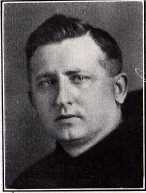
Rev. Casimir Wisnienski, O. F. M., |
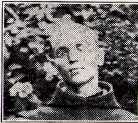
Rev. Cyril Augustinsky, O. F. M., |
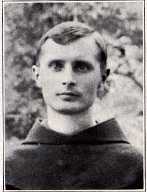
Rev. Cornelius Gains, O. F. M. |
420
![]()
petual Help parish. He made his studies at Orchard Lake, Michigan, and was raised to the sacerdotal state December 17, 1922. His first assignment was to Hartington, Nebraska, as assistant to the Rev. Fr. Schnuettgen. After eighteen months the young curate was made pastor of St. Mary's in the Lincoln diocese. Recalled to Omaha, he helped a few months at St. Francis' church until his appointment as the first resident pastor of St. Stanislaus Church at Duncan took effect. May the parish prosper

Rev. John Maciejewski,
Pastor of St. Stanislaus' Church, Duncan, Neb.
under his guidance and may he build the new church so long fondly wished for and accomplish great things in his parish
PETER KOZLOWSKI
Peter Kozlowski was the first teacher of St. Stanislaus' parochial school at Duncan. He was a native of West Prussia, made his studies for the teaching profession at Pelplin and taught at the Royal Teachers' Seminary at Graudenz. In 1885 he came to Omaha, was employed as collector for a brewery till Fr. Anastase hearing of him, Invited him to Duncan. He opened St. Stanislaus' school in 1886, taught until the Sisters arrived and was very helpful to the pastor and the parish. He found a large class of boys and girls of varying age, whom he taught reading, writing, arithmetic and religion, being well versed in Polish, German and English. He also accompanied Fr. Anastase to the island to assist him at Mass and to teach the children preparing for the Sacraments. He, moreover, boarded a number of children for weeks, when they were preparing for confession and Communion. Mr. Kozlowski also acted as organist and director of a mixed choir and devoted many evenings to choir practice. His wife also kept the church clean, washed the altar linens, made many articles for altar use, even banners for processions, taught the girls needle work and for some time boarded the priest when at Duncan.
In 1888 Mr. Kozlowski engaged in merchandising, continuing therein for 26 years. He also conducted an insurance and real estate agency and sold all the lots at Duncan for the railroad company. Besides he served twelve years as post master, six years as township treasurer, several years as county clerk and as justice of the peace.
Mr. P. Kozlowski was wedded to Miss Mary Klatt, of a prominent family. The children born to their union were: S. M. Concordia, O. S. F.; Clara (Mrs. Leo Borowiak); Monica (Mrs. Edward Melkus, of Grand Island); Alexander, deceased (pay clerk in the United States navy); Valeria (Mrs. Winfred Hartford); Elizabeth (Mrs. Frank Zybach); Theophil, of Omaha; Joseph and Helen (Mrs. ----).
Full in merit and years Mr. P. Kozlowski passed away some months ago on ----, 1930, or 1931, at Grand Island, Nebraska.
We must here make mention of the late J. P. Sokol as a man who did very much for St. Stanislaus parish as well as for his fellow citizens. He met with an unexpected death as the result of an automobile accident near Lincoln in 1930. His funeral was one of the largest ever held at Duncan. Rev. Casimir officiated and preached in Polish and English. Fathers Eugene and Edmund assisted at the Requiem.
Mr. Joseph Czapla, of Duncan, who died at the age of 86 years at the end of November or beginning of December, 1926, was the head of five generations and left 245 descendents, more than any other man in Nebraska, as far as known.
LIST OF SISTERS AT DUNCAN
Srs. M. Rosalinda, M. Kostka, M. Simpliciana, M. Casimiris, M. Gratiosa, M. Evangelista, M. Bonavita, M. Alba, M. Illuminata, M. Ansgaria, M. Peonia, M. Osmana, M. Soeranda, M. Corsina, M. Florentine, M. Dionora, M. Diomeda, M. Berarda, M. Bonita, M. Germana, M. Alfredina, M. Epiphania, M. Bronisla, M. Sophronia, M. Felicissima, M. Uldegarda, M. Remberta, M. Rosalinda, M. Piacida, M. SOphie, M. Siegmunda, M. Domicilla, M. Casimiris, M. Germana, M. Florentiana, M. Illuminata, M. Gratiosa, M. Dionora, M. Berarda, M. Diomeda, M.
421
![]()
Ewalda, M. Hilaria, M. Theodora, M. Canisia, M. Dorothea, M. Theonilla, M. Victoriana, M. Cleta, M. Wenceslaus, M. Lambertilla, M. Lathslaus, M. Frieda and M. Hedwig.
PRIESTS AND BROTHERS OF ST. STANISLAUS PARISH
Fr. Cyril Mitera and John Krzycki for a time had belonged to Duncan, but are more correctly classed as Columbus boys.
Rev. Cornelius (Joseph) Galus was born at Duncan on Nevember (sic) 12, 1883; made his classical studies at Teutopolis, Illinois; was received into the Order of Friars Minor on June 17, 1908, and, after completion of his studies, ordained in 1916. On account of frail health he was sent to Arizona, where he passed away at St. John's on April 16, 1921, in the 33rd year of his age.--R. I. P.
Rev. Raymond William Micek is a native of Duncan, where he first saw the light on January 6, 1890. Having greduated (sic) from "Old St. Joe's," he entered the novitiate at Teutopolis on June 22, 1909, made his simple vows on June 23, 1910; his solemn vows on June 29, 1913, and was raised to the dignity of the priesthood on July 4, 1917. He has spent most of his priestly life at St. Stanislaus at Cleveland, Ohio.
Ven. Brother Sergius Novicki is also a son of the Duncan parish. He is now a member of the Alexian Brothers at Oshkosh, Wis.
SISTERS FROM ST. STANISLAUS PARISH
The following daughters of the parish joined the Franciscan Sisters at Lafayette:
Ven. Sr. M. Canisia Kula, M. Germana Tomaszewicz, M. Loretta Krzycki, M. Theophila Galus, M. Thaddaea Chwistek, M. Florentina Koziol, M. Rogata Lis, M. Hildeberta Dus (dead), M. Quirina Borys (dead), M. Quirina Stec, M. Bertilla Galus, M. Agnetis Laska (dead), M. Bonaventura Poprocki, M. Marcellina Lassek, M. Concordia Kozlowski, M. Eleutheria Bryg, M. Otto Chwistek, M. Ladislaus Borowiak (dead), M. Loiba Kosiba, M. Stella Dus, M. Seraphia Krzycki, M. Riceria Borys (dead), M. Stanilla Slawinski, M. Catherine Galus (Felician Sister), M. Ambrosia Tworek, M. Prima Slawinski, M. Corneliana Micek.
SOLDIER BOYS OF DUNCAN
Spanish American War Volunteers: Hy. Skorupa, John Kudron and Michael Lassek.
World War Volunteers: John Staroscik, Frank Robak, Martin Nodal, John Walaszek, Joseph Walaszek, Phillip Z. Krzycki, Phillip Borowiak, Louis Koziol, Adolph Gonsior, John Forman and Leo Forman.
Drafted: Clifford Meek, Frank Torczon, John Podraza, Stephen Duracinski, Vincent Czerwonka (who died in France), and Frank Wanat.
| Year | Bapt. |
Marriages. |
Deaths |
| 1882 | 5 |
||
| 1883 | 50 |
7 |
7 |
| 1884 | 61 |
16 |
10 |
| 1885 | 52 |
3 |
9 |
| 1886 | 74 |
13 |
10 |
| 1887 | 60 |
17 |
11 |
| 1888 | 72 |
20 |
8 |
| 1889 | 60 |
6 |
15 |
| 1890 | 64 |
14 |
10 |
| 1891 | 34 |
17 |
24 |
| 1892 | 57 |
9 |
27 |
| 1893 | 45 |
15 |
15 |
| 1894 | 42 |
3 |
10 |
| 1895 | 28 |
2 |
5 |
| 1896 | 28 |
3 |
3 |
| 1897 | 41 |
10 |
10 |
| 1898 | 29 |
7 |
10 |
| 1899 | 26 |
9 |
7 |
| 1900 | 31 |
8 |
13 |
| 1901 | 33 |
7 |
13 |
| 1902 | 29 |
4 |
8 |
| 1903 | 34 |
3 |
5 |
| 1904 | 24 |
5 |
2 |
| 1905 | 25 |
6 |
0 |
| 1906 | 17 |
7 |
7 |
| 1907 | 30 |
6 |
4 |
| 1908 | 17 |
11 |
6 |
| 1909 | 25 |
4 |
7 |
| 1910 | 28 |
11 |
13 |
| 1911 | 32 |
10 |
12 |
| 1912 | 32 |
5 |
8 |
| 1913 | 26 |
3 |
6 |
| 1914 | 25 |
2 |
8 |
| 1915 | 29 |
6 |
8 |
| 1916 | 26 |
7 |
8 |
| 1917 | 12 |
4 |
5 |
| 1918 | 28 |
1 |
2 |
| 1919 | 15 |
10 |
9 |
| 1920 | 17 |
3 |
5 |
| 1921 | 18 |
3 |
4 |
| 1922 | 18 |
5 |
4 |
| 1923 | 25 |
6 |
1 |
| 1924 | 26 |
6 |
8 |
| 1925 | 16 |
4 |
6 |
| 1926 | 20 |
2 |
6 |
| 1927 | 27 |
3 |
3 |
| 1928 | 18 |
6 |
8 |
| 1929 | 17 |
7 |
9 |
| 1930 | 19 |
2 |
7 |
422
![]()
|
|||